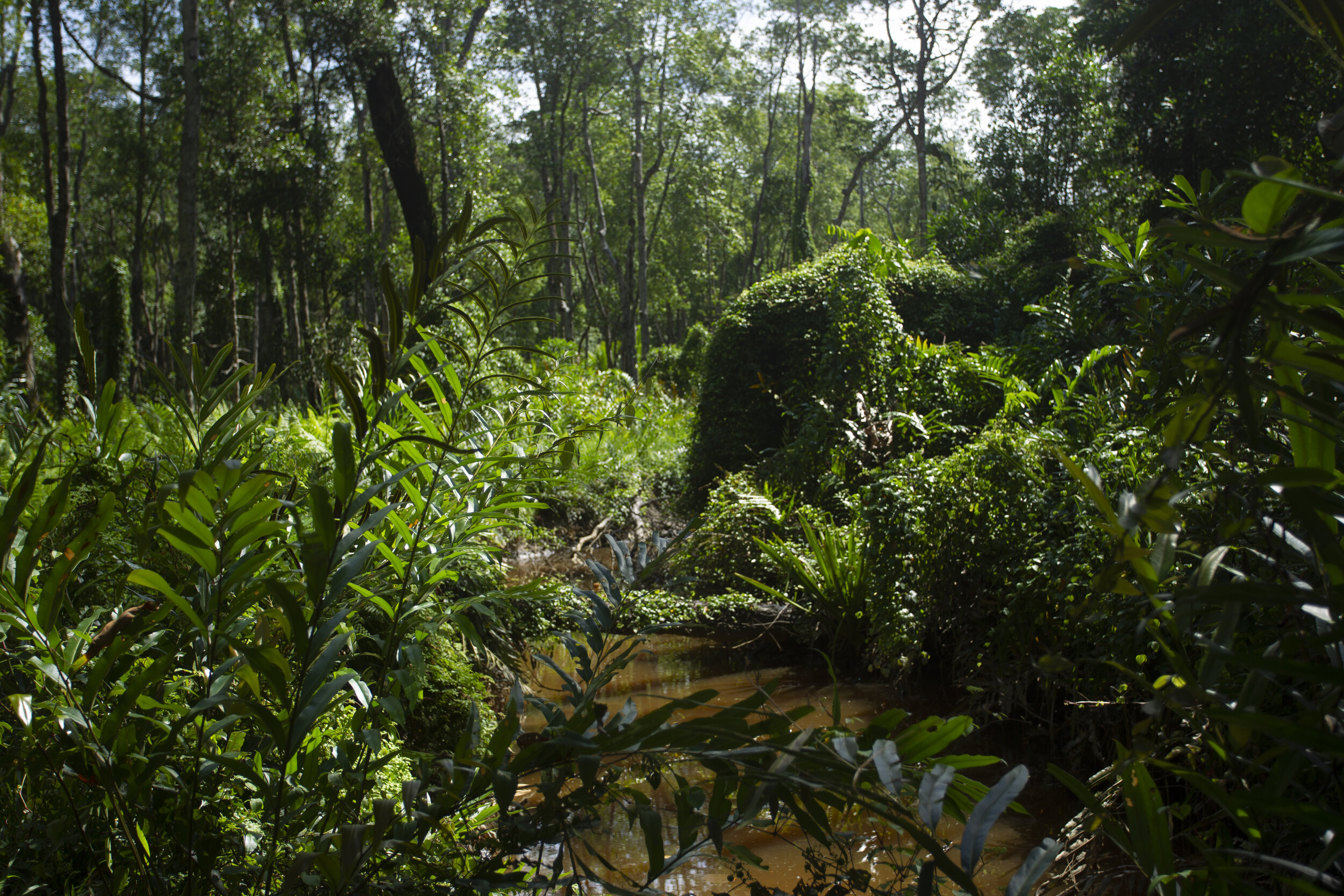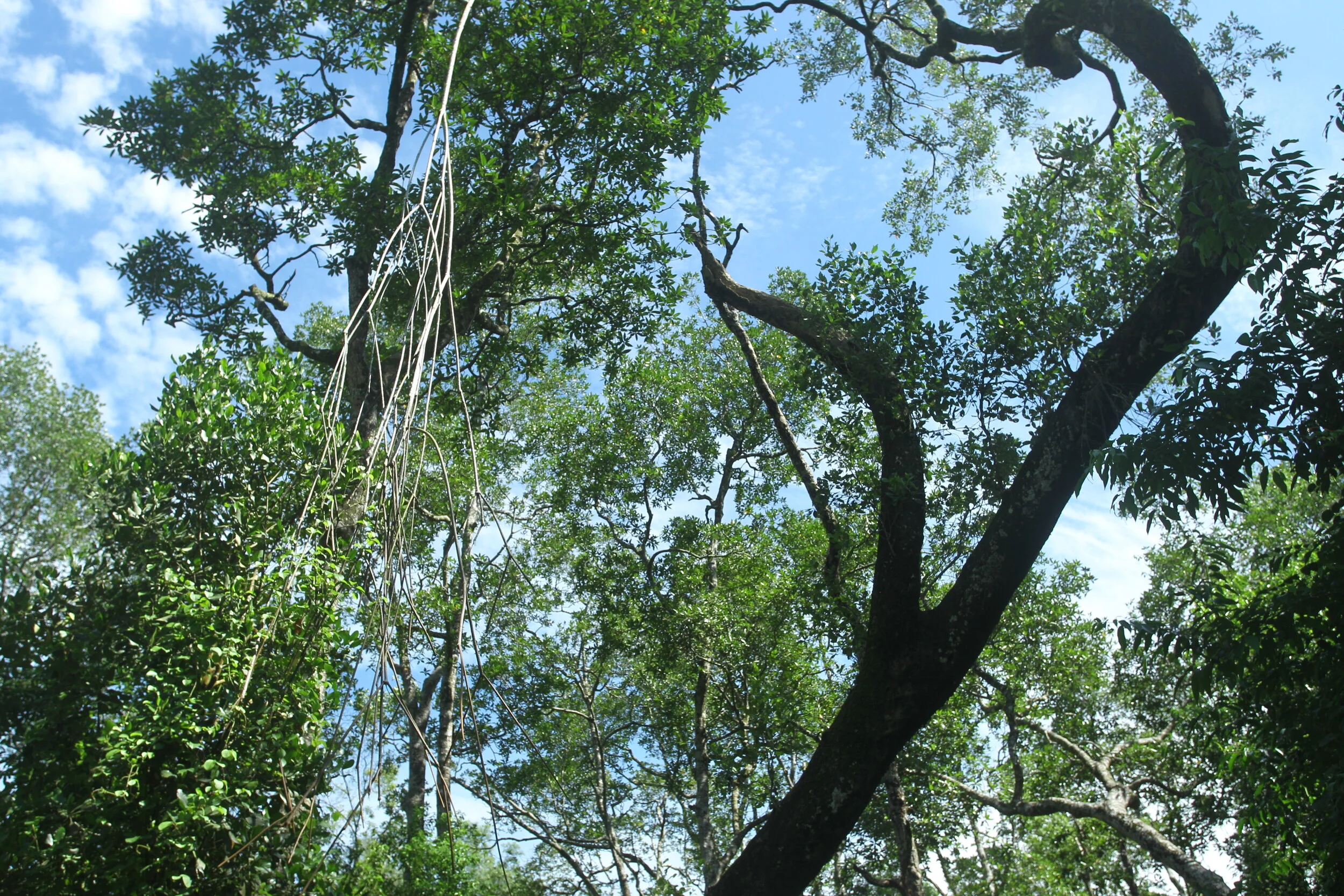
Not your average house plant—dive into the wilderness of the mangroves
EVERY PLANT PLAYS ITS PART
Nipah Palm
Nypa fruticans
As the only true mangrove palm species, any palm-like trees you see growing in the mangroves is a Nipah palm. However, they do not tolerate salinity as well as other species of mangrove trees, so they typically thrive more inland, where the waters have lower salt content.
Unlike other palm trees which possess an upright stem, the only visible part of the Nipah is their fronds (leaves). Their stems grow horizontally underground, and branches in a Y-shaped pattern.
The Nipah palm used to be a highly commercially valuable plant species and are used to make brooms, roof thatchings, and even syrup! However with industrialization and mass production of alternatives such as synthetic fibers, corrugated zinc sheets and white sugar, the industry surrounding the Nipah palm has been largely relegated to the annals of history.
Kayu Ara, Malayan Banyan
Ficus microcarpa
The Malayan Banyan plant grows in its natural habitat of river banks and swampy flood plains, but is well adapted to grow in different terrains.
Here in Labuk Bay, you can recognise these trees via their numerous aerial roots which hang down from its branches. In some older trees, these roots will eventually grow into thick prop roots that help support its massive branches. Despite its huge stature, the fruits of the Malayan Banyan are small and inconspicuous, dark purple in colour and the size of a small marble. The fruits are an occasional treat for the proboscis monkeys, and the favourite food of the Oriental-Pied Hornbills found in Labuk Bay.
Bakau Minyak
Rhizophora apiculata
The most common species of mangrove tree found in Labuk Bay, they are an important source of food for proboscis monkeys. The trees also provide shelter for them, as the monkeys prefer to sleep on tall branches, overlooking the river coast.
The easiest way to identify these trees is by their prop and stilt roots which can be seen at the lower part of the tree. The roots spread over wide an area, providing a stable base for these plants growing on soft waterlogged soil, they also possess the function of desalination, removing salt from the brackish water they grow in.
Wood from this species is hard and heavy, and could be used for the construction of beams and piling. It is also an important fuelwood species; as they’re the primary tree of choice for the preparation of charcoal.
Mangrove Fern
Acrostichum aureum
This species grows quickly and is the main undergrowth in mangrove forests. However, their quick growth proves to be a hindrance especially during replanting efforts, as they’ll quickly outgrow other tree species by up to 3 meters and starve them of sunlight.
However in a mature mangrove forest, the mangrove fern is an important food source for animals as they replenish quickly. These thickets provide safety and shelter for smaller animals, and they are also an excellent nesting spot for various bird species
MORE INFORMATION
OTTERLY ADORABLE
Read about Hanyut’s story and learn about life as an otter.
STAYING GROUNDED
These hard-to-spot mini creatures could very well be right under your feet.
NOSE OUT
Learn about the stars of Labuk Bay and their lives in the mangroves.









